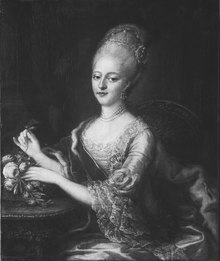1789 Conspiracy
- View a machine-translated version of the Swedish article.
- Machine translation, like DeepL or Google Translate, is a useful starting point for translations, but translators must revise errors as necessary and confirm that the translation is accurate, rather than simply copy-pasting machine-translated text into the English Wikipedia.
- Do not translate text that appears unreliable or low-quality. If possible, verify the text with references provided in the foreign-language article.
- You must provide copyright attribution in the edit summary accompanying your translation by providing an interlanguage link to the source of your translation. A model attribution edit summary is
Content in this edit is translated from the existing Swedish Wikipedia article at [[:sv:1789 års sammansvärjning]]; see its history for attribution. - You may also add the template
{{Translated|sv|1789 års sammansvärjning}}to the talk page. - For more guidance, see Wikipedia:Translation.

The 1789 Conspiracy was a plot in Sweden in 1789, with the purpose of deposing Gustav III of Sweden, and place his brother Charles XIII of Sweden on the throne. The plot was instigated by a group of conspirators at the royal court, consisting of among others the king's sister-in-law, Charles' spouse Hedvig Elisabeth Charlotte of Holstein-Gottorp, the king's youngest brother Prince Frederick Adolf, Duke of Östergötland, and Charles' favorite Gustaf Adolf Reuterholm. The plot was influenced by the opposition of the nobility against Gustav III because of the Union and Security Act during the Russo-Swedish War (1788–1790), and the plan was to convince Charles to act as the central figure and symbol of this opposition.[1] The plot was discontinued because Charles, when informed, refused to participate in it.[2] The plot was never officially exposed and did not result in any legal action.
See also
- Armfelt Conspiracy
- Anjala conspiracy
References
- ^ My Hellsing (2013). Hovpolitik. Hedvig Elisabeth Charlotte som politisk aktör vid det gustavianska hovet. Örebro: Örebro universitet. ISBN 978-91-7668-964-6
- ^ My Hellsing (2013). Hovpolitik. Hedvig Elisabeth Charlotte som politisk aktör vid det gustavianska hovet. Örebro: Örebro universitet. ISBN 978-91-7668-964-6
- v
- t
- e
- Ancient Egypt
- 1155 BC
- Roman Republic (63 BC)
- Roman Empire (65)
- Holy Roman Empire (1062)
- Mamluk Sultanate (1386)
- England (1415)
- Florence (1478)
- France (1560)
- France (1567)
- Sweden (1569)
- Sweden (1574)
- Sweden (1576)
- England (1586)
- Philippines (1587)
- England (1603)
- England (1605)
- England (1641)
- Hungary (1670)












